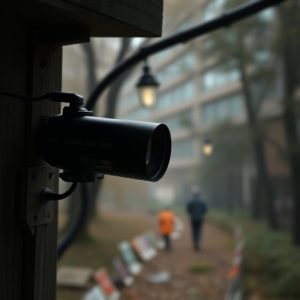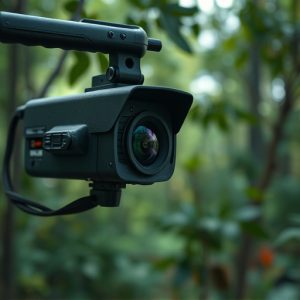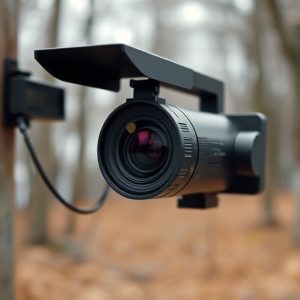Detecting Concealed Cameras: Tips & Ethical Considerations for Parental Monitoring
Electromagnetic signals, often invisible but ubiquitous, are key in modern surveillance. Understandi…….
Electromagnetic signals, often invisible but ubiquitous, are key in modern surveillance. Understanding these signals from devices like phones and cameras allows individuals to detect hidden equipment for privacy protection, especially in childcare settings. To uncover concealed cameras for babysitter monitoring, conduct thorough inspections and use specialized detectors. Ethical considerations, including consent and legal regulations, are vital when employing such surveillance methods to ensure trust and respect for privacy rights.
In an era where privacy is a precious commodity, understanding how to detect concealed surveillance devices has become crucial. This article delves into the world of electromagnetic signal detection, offering insights on identifying hidden cameras commonly used for babysitter monitoring. We explore the science behind electromagnetic signals and their sources, providing practical tips to help you navigate this intricate landscape. Additionally, we discuss ethical considerations and legal aspects, ensuring a comprehensive guide to staying informed in today’s digital age.
- Understanding Electromagnetic Signals and Their Sources
- Tips for Detecting Concealed Surveillance Devices
- Ethical Considerations and Legal Aspects of Monitoring with Hidden Cameras
Understanding Electromagnetic Signals and Their Sources
Electromagnetic signals are an integral part of our modern world, often invisible to the naked eye but all around us. When it comes to surveillance and hidden camera detection, understanding these signals is key. Many devices, from everyday electronics to sophisticated concealed cameras used for babysitter monitoring, emit electromagnetic radiation as they function. These signals can be detected and analyzed to uncover hidden equipment.
By familiarizing yourself with common electromagnetic signal sources, you gain valuable insights into potential surveillance. For instance, wireless communication devices like mobile phones, Wi-Fi routers, and Bluetooth headsets generate specific signals. Some hidden cameras, especially those designed for discrete monitoring, may also emit unique electromagnetic signatures. Detecting these signals requires specialized equipment and knowledge, but it’s a powerful tool to ensure privacy and uncover concealed cameras in various settings, including homes or childcare environments.
Tips for Detecting Concealed Surveillance Devices
When it comes to detecting concealed surveillance devices, especially those used for babysitter monitoring, a proactive approach is key. Start by conducting a thorough inspection of the area, paying close attention to common hiding spots like corners, doors, and windows. Using specialized electromagnetic signal detectors can significantly enhance your chances, as these devices are designed to pick up on unusual electronic emissions that might indicate the presence of hidden cameras or listening devices.
For instance, if you suspect a babysitter is using concealed cameras, look for any unfamiliar electronics or odd-looking objects left behind. Regularly update your detection methods and stay informed about the latest surveillance technology to ensure you’re prepared for any potential threats. Additionally, educating yourself on the legal implications of hidden camera use in homes can serve as a powerful deterrent.
Ethical Considerations and Legal Aspects of Monitoring with Hidden Cameras
While hidden cameras can offer valuable insights and peace of mind, particularly in scenarios like concealed cameras for babysitter monitoring, it’s crucial to navigate their use with ethical considerations and legal awareness. The privacy rights of individuals, both adults and children, must be respected at all times. Setting clear boundaries and gaining informed consent from those being recorded can help ensure the legality of surveillance efforts.
Using hidden cameras in homes or care settings raises concerns about consent, data protection, and potential misuse of footage. It’s essential to understand local laws regarding surveillance, which vary significantly around the world. Transparency about the presence of these devices and their purpose is vital to maintaining trust and upholding legal standards.
While understanding electromagnetic signals and their sources is a key step in detecting concealed cameras, such as those used for babysitter monitoring, it’s crucial to balance this knowledge with ethical considerations. Legally, the use of hidden surveillance devices must adhere to stringent regulations, respecting privacy rights. As technology advances, staying informed about new detection methods is essential, but it should always be employed responsibly and within legal boundaries to ensure a safe and private environment for all individuals.


